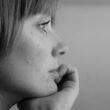You just heard about charting your cycle, but you’re on hormonal birth control. You’re excited about how charting helps you to know your body and even detect health problems. At the same time you still aren’t well informed about this method’s effectiveness for avoiding pregnancy. Maybe you’re on birth control because you have endometriosis or PCOS and you’re concerned about the symptoms coming back with a vengeance when you get off. Can you start charting anyway?
Unfortunately, the answer is no, you can’t chart when you’re on the pill. Here’s why:
First of all, you’re not having a real cycle if you’re on hormonal birth control. The pill and other hormonal birth control methods work by making your body think that you’re pregnant. The fake hormones they contain act in your body in three ways:
- stopping your ovaries from releasing an egg,
- thickening the cervical mucus,
- thinning the lining of your uterus.
Most important when you’re on the pill is the suppression of your ovulation. The point of charting is to identify the time of ovulation, which normally happens once in each cycle, unless you are on hormonal contraceptives. Ovulation is part of a complex internal process that includes:
- hormonal changes,
- a change in the position of the cervix,
- the secretion of the cervical mucus,
- a change in the consistency of the mucus,
- a small but consistent rise of your body temperature after ovulation has occurred
Charting is keeping track of one or more of these signs: the cervical mucus, the position of the cervix, the body temperature. When you’re on the pill, charting becomes impossible because the signs are gone.The pill and other hormonal contraceptives take over the natural hormonal process and release synthetic hormones that force your body to do things it would not otherwise do.
Women on the pill don’t have real periods, either. During a natural cycle, when you’re not on the pill, the lining of the uterus, also called the endometrium, builds up into a thick and cushy wall that contains the nutrients to help an embryo implant and grow comfortably. If no egg is fertilized during a given cycle, this lining will shed and be discarded so that it can start fresh at the new cycle. That’s a natural period and it’s important to have them.
When you’re on the pill, you will experience what’s also called breakthrough bleeding or withdrawal bleeding. It may look like a period, although it’s much less abundant and darker in color. It is caused by a change in hormone dosage during the placebo-phase of your pill (or the week break of the Nuvaring or the patch). It’s not a true period since your body has not built up the lining of the uterus it should have.
By now, you see how the pill takes over your hormonal cycle. No ovulation, no cervical mucus, no periods. This gives you an idea of how much these drugs impact your body. That’s just a description of what is happening at the level of the reproductive system, but it affects your body way beyond that.
Charting your cycle, the basic method for fertility awareness, means reading the natural signs of your body. It will include the tracking of your natural periods, which should last about 6 days, with the heaviest flow during the first three days. It often includes tracking your mucus, and observing the change in consistency as you approach ovulation. It finally includes knowing when you ovulate and what to expect after you do. It will tell you accurately when the first day of your period will occur, which is a constant for any woman, 14 to 16 days after the day of ovulation. It also help you understand how long it takes you to ovulate after the first day of your period, which can be useful data. It can help identify low hormone levels that could cause PMS or other reproductive health issues. Charting and fertility awareness are effective ways to avoid pregnancy or to achieve pregnancy without harming your body: but you have to be off the pill.
Comparing a “cycle” on the pill and a natural cycle is like comparing Paris at the Epcot Center and Paris, France: it’s not the same. It may look similar, but I can tell you as a Frenchman, Epcot is nowhere near being the real thing. My advice to you: go for the real thing. It may seem a bit more complicated at first, but you won’t regret it.







